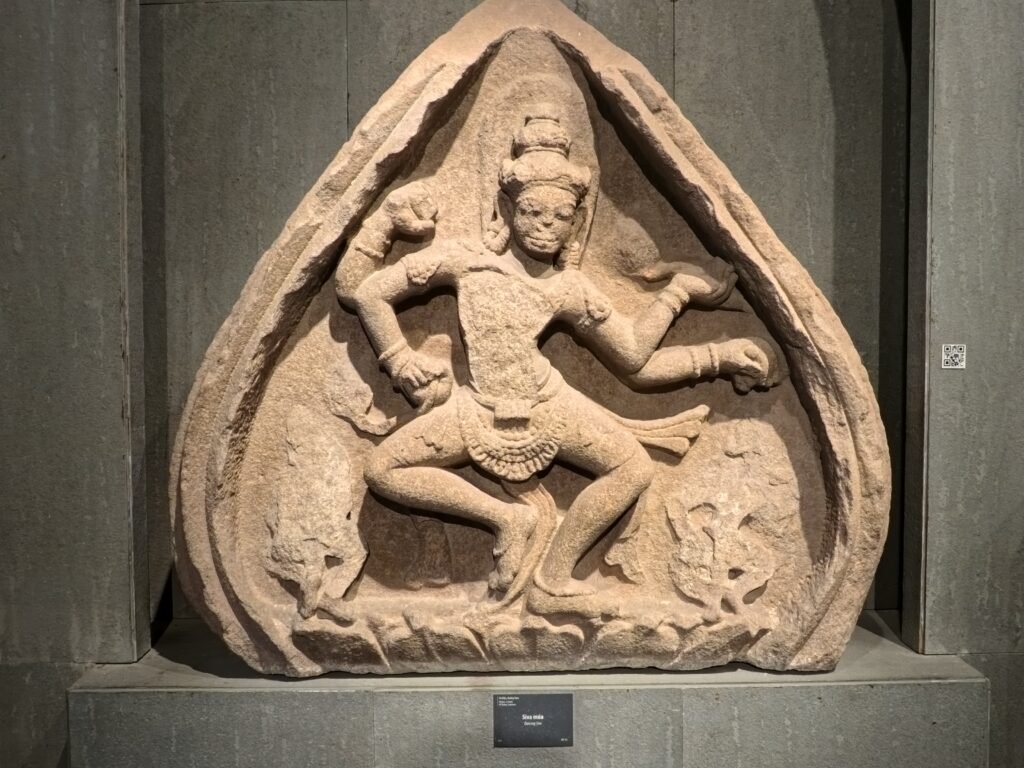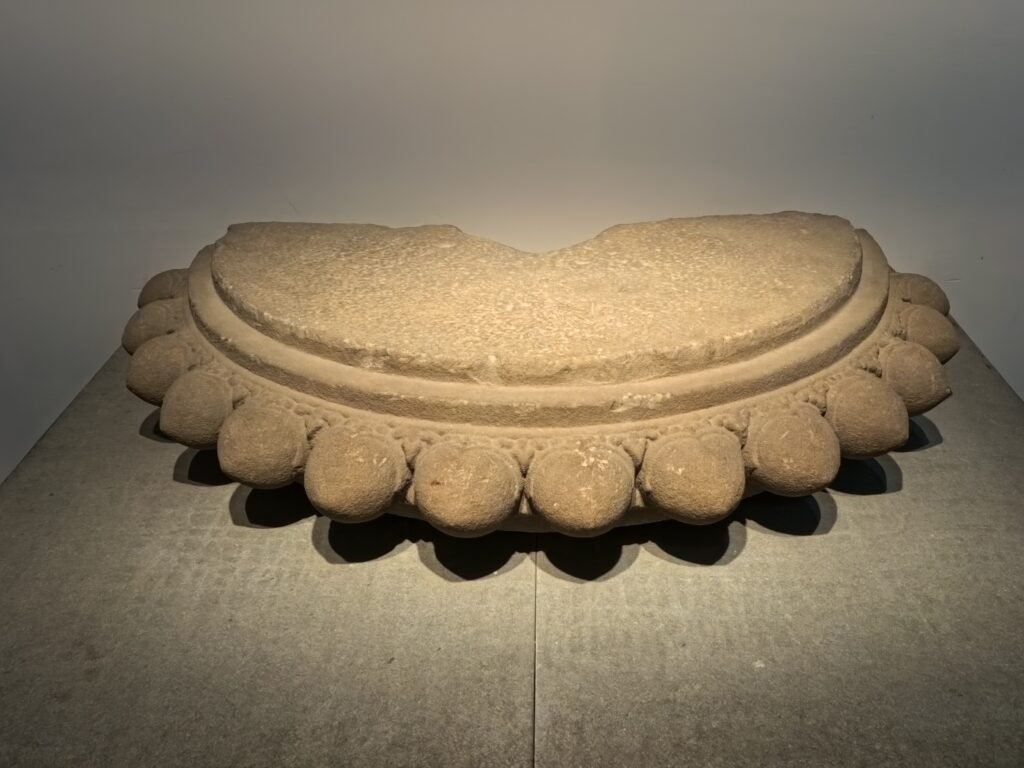A Journey Through Culture and Cuisine
Exploring Da Nang: Cham Art and Coastal Views
From Da Nang to Hoi An, discover a captivating journey through Vietnam’s rich cultural heritage, stunning coastal landscapes, and the timeless charm of ancient towns.
The morning in Da Nang, Vietnam’s dynamic coastal city, began with rain, setting a reflective tone for the day. Undeterred, I made my way to the Cham Sculpture Museum. Established by the French in the early 20th century, the museum showcases intricate sculptures from Cham temples, remnants of the ancient Champa Kingdom. Each piece seemed to tell a story of a bygone era, connecting visitors to Vietnam’s rich heritage.
The Cham Museum, located in Da Nang, is a treasure trove of artifacts that illuminate the rich history and artistry of the Champa civilization. This museum houses over 2,000 objects, many of which come from the sacred Hindu temples of My Son, a former religious hub of the Champa Kingdom. The exhibits provide a window into centuries of Champa culture focusing on their reverence for Shiva and Hindu mythology.






Notable Exhibits
A highlight includes the “Linga-Yoni” statues, representing the balance of male and female energies. These sacred symbols, central to Champa’s spiritual practice, emphasize fertility and unity. Visitors will also find a comprehensive collection of ancient pottery, temple carvings, and stone sculptures that showcase the evolution of Cham art from the 4th to the 13th century.
Connection to My Son
The museum is a gateway for those planning to visit My Son, located about 30 kilometers west of Da Nang. As one of the most significant archaeological sites in Vietnam, My Son was the spiritual and political center of the Champa Kingdom. It features over 70 brick and stone structures dedicated to Shiva, many of which are echoed in the sculptures on display at the museum.
Tips for Travelers
For those interested in exploring the Cham Museum, plan a visit before heading to My Son to understand the historical and religious context. Guided tours are available, providing enriching insights into the artifacts and their significance.
After the museum visit, I decided to leave Da Nang and head spontaneously to Hoi An, just 40 minutes away. Booking a Grab ride for €12 was quick and convenient. The coastal road offered glimpses of long beaches, though the rainy season kept them inaccessible. Da Nang, modern and organized, felt a world away from the bustling chaos of Vietnam’s southern cities, yet it still carried traces of international influence, particularly from Russian tourism.
Hoi An: A Charming Town with Timeless Appeal
Hoi An, meaning “peaceful gathering,” is a compact city steeped in history and culture. Once known as Faifoo, this UNESCO World Heritage Site was a vibrant trading port in the 16th and 17th centuries, attracting merchants from China and Japan. Today, it draws nearly four million visitors annually, captivated by its historic streets, stunning lantern displays, and culinary delights.
Upon arriving, I arranged a free walking tour through my hotel for the next morning. December isn’t the ideal time to visit central Vietnam, as the rainy season dominates, but the city’s charm is undiminished.
An Afternoon of Culture and Culinary Delights
My afternoon in Hoi An began with a visit to the Precious Heritage Museum, curated by French photographer Rehahn. This small but impactful museum highlights Vietnam’s ethnic diversity through stunning portraits and artifacts. The faces of Vietnam’s elders, captured in their raw beauty and authenticity, left a lasting impression.



Next, I indulged in Hoi An’s traditional cuisine, sampling local dishes that define its culinary identity:
- My Quang: Rice noodles with meat, herbs, and a small broth.
- White Rose: Delicate dumplings filled with shrimp, unique to Hoi An.
- Cao Lau: Noodles with pork and local greens, served in a rich, flavorful broth.
The portions were generous, and the flavors showcased the region’s unique blend of freshness and complexity.


Vietnamese Coffee: A Must-Try Experience
No trip through Vietnam is complete without savoring its famous coffee. Known for its rich, robust flavor and unique preparation, Vietnamese coffee is an experience in itself. In Hoi An, cafes along the Thu Bon River offer the perfect spot to try “cà phê sữa đá” (iced coffee with condensed milk) or “cà phê trứng” (egg coffee), a creamy, dessert-like specialty.
Whether you’re starting your morning in Da Nang with a hot cup of “cà phê đen” (black coffee) or enjoying a mid-afternoon break in Hoi An with a glass of iced coffee, the unique brewing methods and local beans create a flavor that’s unforgettable.
Vietnamese Coffee: From Bean to Cup
Vietnam is the world’s second-largest coffee producer, and its beans come from diverse regions, each contributing unique flavors to its iconic brews. The Central Highlands, particularly the provinces of Dak Lak, Lam Dong, Gia Lai, and Kon Tum, are the heart of Vietnam’s coffee production. These areas, with altitudes ranging from 800 to 1,500 meters, provide the perfect climate for cultivating robusta and arabica coffee.
The robusta beans, known for their strong and earthy flavor, dominate the coffee exports, while arabica, grown at higher altitudes in places like Da Lat (Lam Dong Province), offers a smoother, milder taste. Travelers exploring these regions can visit coffee plantations, learn about traditional cultivation methods, and even taste freshly brewed coffee on-site.
When enjoying a cup of Vietnamese coffee in Hoi An or Da Nang, it’s fascinating to reflect on the journey the beans have made—from the misty highlands to your glass.
Tailor Made Garments
A stop at a renowned tailor shop added a touch of luxury to the day. Watching the silk production process, from silkworms to weaving, was fascinating. Ordering a custom outfit in Hoi An is an experience, with garments ready in just 24 hours—a testament to the town’s artisanal expertise.



Discovering Hoi An on Foot: A Walking Tour
The next morning, I joined a walking tour led by Cindy, a young guide who recently graduated in tourism from Saigon University. Her knowledge and enthusiasm brought Hoi An’s history to life as we explored its temples, pagodas, and iconic neighborhoods.
Highlights included:
- The Japanese Covered Bridge: 17th-century structure with a Buddhist temple inside, symbolizing Hoi An’s historical ties with Japan.
- The Chinese and Japanese Quarters: Vibrant areas that reflect the city’s diverse trading past.
- The Historic Center: Home to the world’s only Japanese museum and countless architectural gems.
Hoi An: A Blend of History, Tradition, and Resilience
Hoi An’s Cultural Significance
Beyond its famed lantern-lit streets and vibrant markets, Hoi An boasts a wealth of cultural treasures. Its blend of Chinese, Japanese, and European architectural influences reflects its history as a bustling port city. Highlights include the Japanese Covered Bridge, the Assembly Hall of the Fujian Chinese Congregation, and the picturesque Tan Ky Old House. These landmarks, along with the city’s UNESCO status, continue to draw visitors eager to experience its well-preserved charm.




The River and Hoi An’s Relationship with Floods
Hoi An is nestled along the Thu Bon River, which has historically been a vital trade artery for the city, linking it to the broader trading networks of Southeast Asia and beyond. However, this proximity to the river also brings challenges. Seasonal floods are a regular occurrence in Hoi An, with the old town often submerged under water during the rainy season. While these floods can disrupt daily life, they are also a testament to the resilience of the local community, who have adapted to this natural rhythm with resourcefulness and grace.
The Ancient Well and Cao Lau
A hidden gem of Hoi An’s culinary and cultural heritage is the Ba Le Well, an ancient well that has stood the test of time. This well is still in use today and plays a unique role in the preparation of the iconic dish, Cao Lau. It is said that the authentic flavor of Cao Lau owes much to the mineral-rich water drawn from this historic well, which locals believe gives the noodles their distinct texture and taste.
Recommendations for Travelers
When visiting Hoi An, take time to explore its narrow alleys, visit local artisan workshops, and enjoy a boat ride on the Thu Bon River. Be sure to sample Cao Lau, preferably made with water from the Ba Le Well, and immerse yourself in the town’s timeless blend of tradition and hospitality.
As the evening approached, the streets transformed into a magical scene with hundreds of glowing lanterns. Walking along the river, surrounded by the soft glow of light, was like stepping into a fairytale.
Practical Tips for Traveling From Da Nang to Hoi An
- Travel Options: A Grab ride is the easiest way to reach Hoi An from Da Nang, costing around €12. The scenic coastal road adds charm to the journey.
- Best Time to Visit: While December brings rain, the city’s cultural richness makes it worthwhile year-round. Bring an umbrella and embrace the weather.
- Culinary Highlights: Don’t miss traditional dishes like My Quang, Cao Lau and White Rose dumplings. They’re both affordable and delicious.
- Tailored Outfits: Order custom clothing in Hoi An for a unique souvenir. Most shops deliver within 24 hours.
- Book a Walking Tour: Guided tours provide fascinating insights into the city’s history and culture. Many hotels offer free or affordable options.
Final Thoughts: From Da Nang to Hoi An
Traveling from Da Nang to Hoi An is a journey through time, offering a blend of ancient history, modern comforts, and unforgettable experiences. From the captivating sculptures of Da Nang’s Cham Museum to the lantern-lit streets of Hoi An.
Whether you’re sampling local cuisine, ordering a custom outfit, or walking through centuries-old streets, every moment feels like a step into the soul of Vietnam.
- A Journey Through Culture and Cuisine
- Exploring Da Nang: Cham Art and Coastal Views
- Hoi An: A Charming Town with Timeless Appeal
- An Afternoon of Culture and Culinary Delights
- Vietnamese Coffee: A Must-Try Experience
- Vietnamese Coffee: From Bean to Cup
- Tailor Made Garments
- Discovering Hoi An on Foot: A Walking Tour
- Hoi An: A Blend of History, Tradition, and Resilience
- The River and Hoi An’s Relationship with Floods
- The Ancient Well and Cao Lau
- Recommendations for Travelers
- Practical Tips for Traveling From Da Nang to Hoi An
- Final Thoughts: From Da Nang to Hoi An

Leave a Comment
You must be logged in to post a comment.